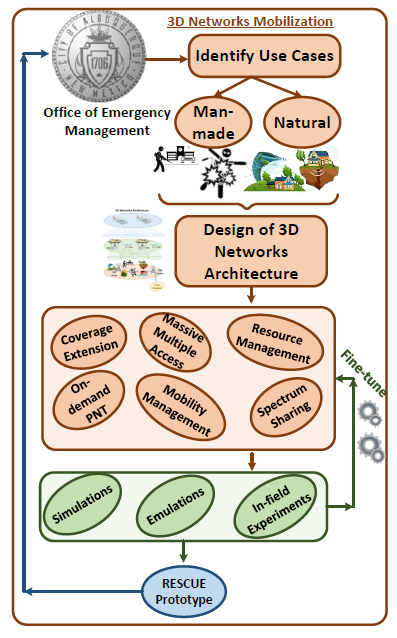PROTON LAB
PROTON LAB
The Performance and Resource Optimization in Networks (PROTON) Lab focuses on developing advanced frameworks and methodologies for optimizing network performance, resource allocation, and system resilience across diverse application domains. Central to the lab's efforts is the creation of trust-aware and secure algorithms that enhance decision-making in autonomous and resource-constrained systems, such as GPS-denied navigation and cyber-physical infrastructures. The lab also emphasizes scalable solutions for real-time data fusion and resource management, leveraging machine learning and game-theoretic models to address the complexities of heterogeneous and distributed environments. Furthermore, PROTON Lab explores cutting-edge approaches for cybersecurity, renewable energy integration, and wireless communication systems, targeting practical challenges in smart grids, public safety, and sustainable energy systems. Through these multidisciplinary efforts, the lab contributes to the development of resilient, intelligent, and efficient networks capable of supporting next-generation technologies.
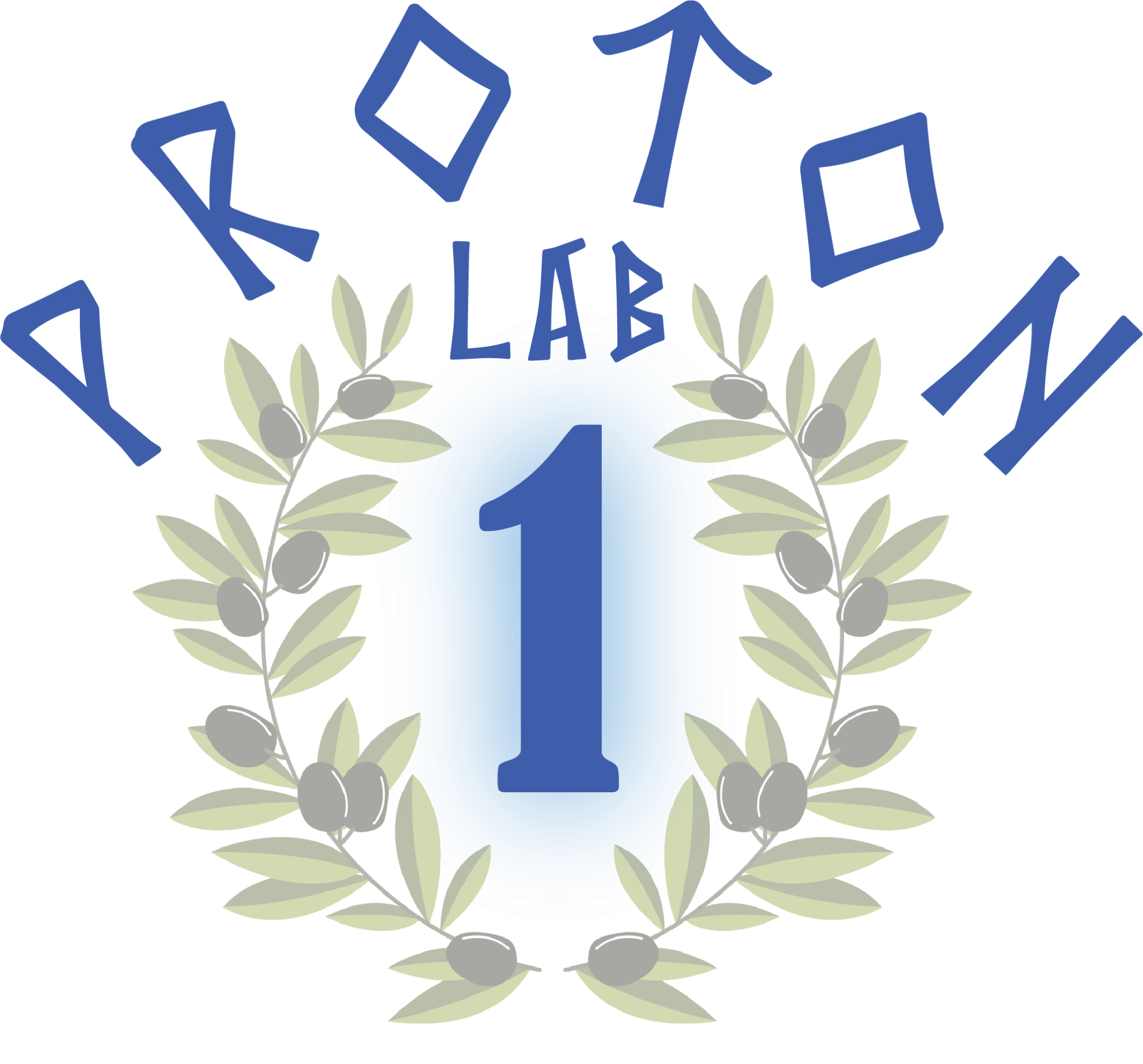

Director of PROTON Lab
Eirini Eleni Tsiropoulou
Associate Professor
School of Electrical, Computer and Energy Engineering
650 E Tyler Mall, Tempe, AZ 85281
Office: GWC 430
PROTON Lab: GWC 439
E-address: eirini@asu.edu
PhD Students
Positioning, Navigation, and Timing, Machine Learning, Communication Systems
(Post Proposal)
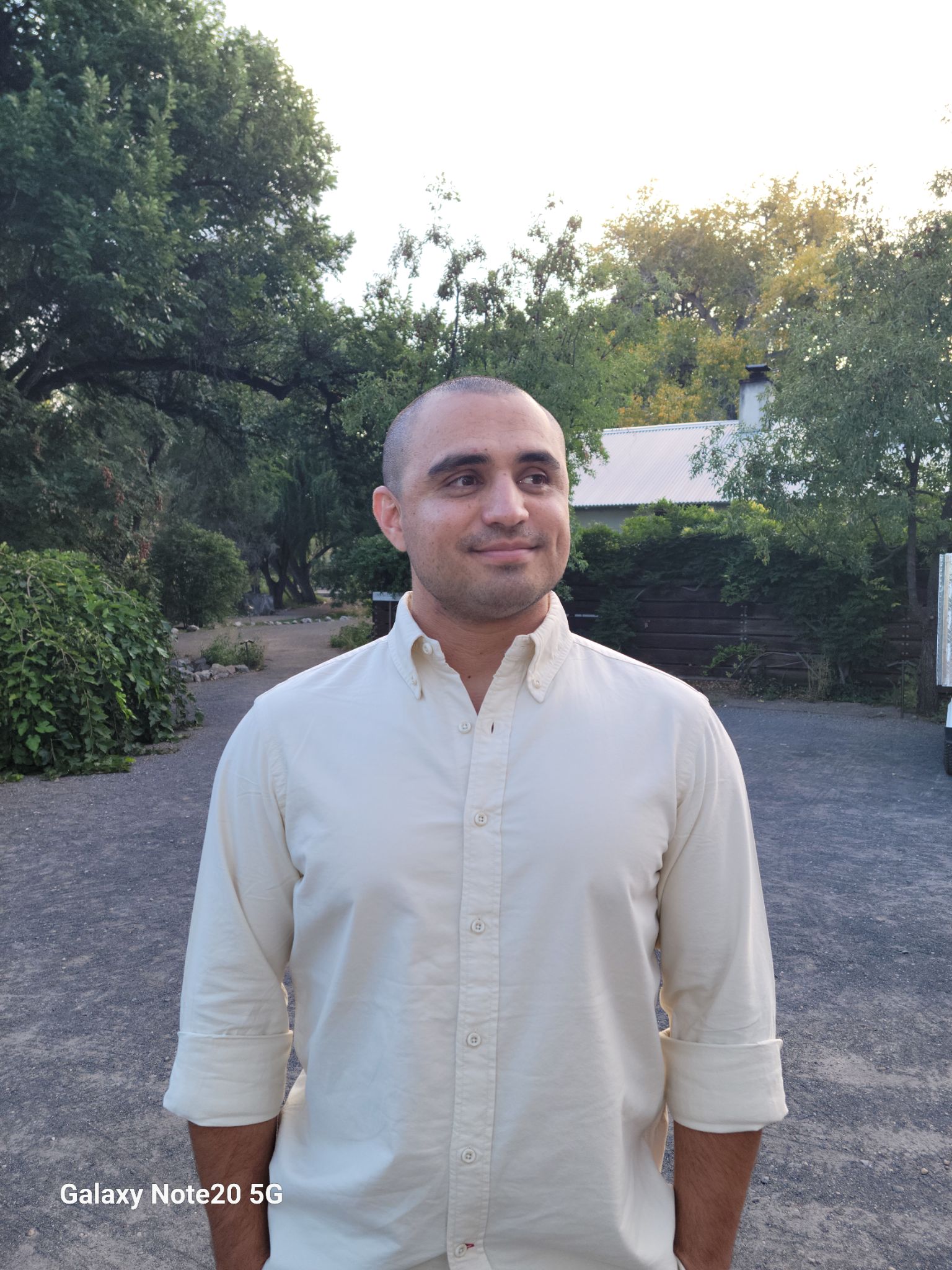
Joshua R Attencio
Public Safety Networks, Game Theory, Battlefield Communications and Rescue Operations
(Post Proposal)

Reinforcement Learning, Decision-making, Optimization
(Pre qualifier)

Jason Bingham
Navigation Systems, Wireless Communications, Game Theory
(Pre qualifier)
Research Projects

HELIOCOMM
HELIOCOMM aims to introduce a resilient wireless communication system based on the principles of Integrated Access and Backhaul (IAB) technology, entropy-based routing, dynamic spectrum management, and interference mitigation. Specifically, the main goals and objectives are summarized as follows:
Design of IAB-based network & optimization of energy efficiency and latency
Testing of IEEE 802.11ax and the IEEE 802.15.4 under the IAB-based network
Dynamic clustering-based network reconfiguration
Design an entropy-based routing
Perform dynamic spectrum management in the access and wireless backhaul
Implement intra- and inter-cluster interference mitigation
Perform modeling and simulation
Perform emulation-based experiments
Partial HELIOCOMM validation at Sandia National Laboratories National Solar Thermal Test Facility (NSTTF)
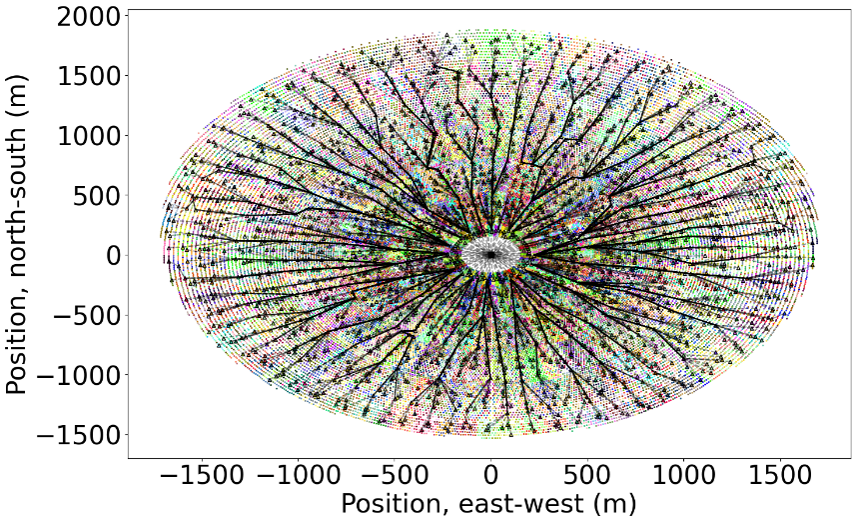
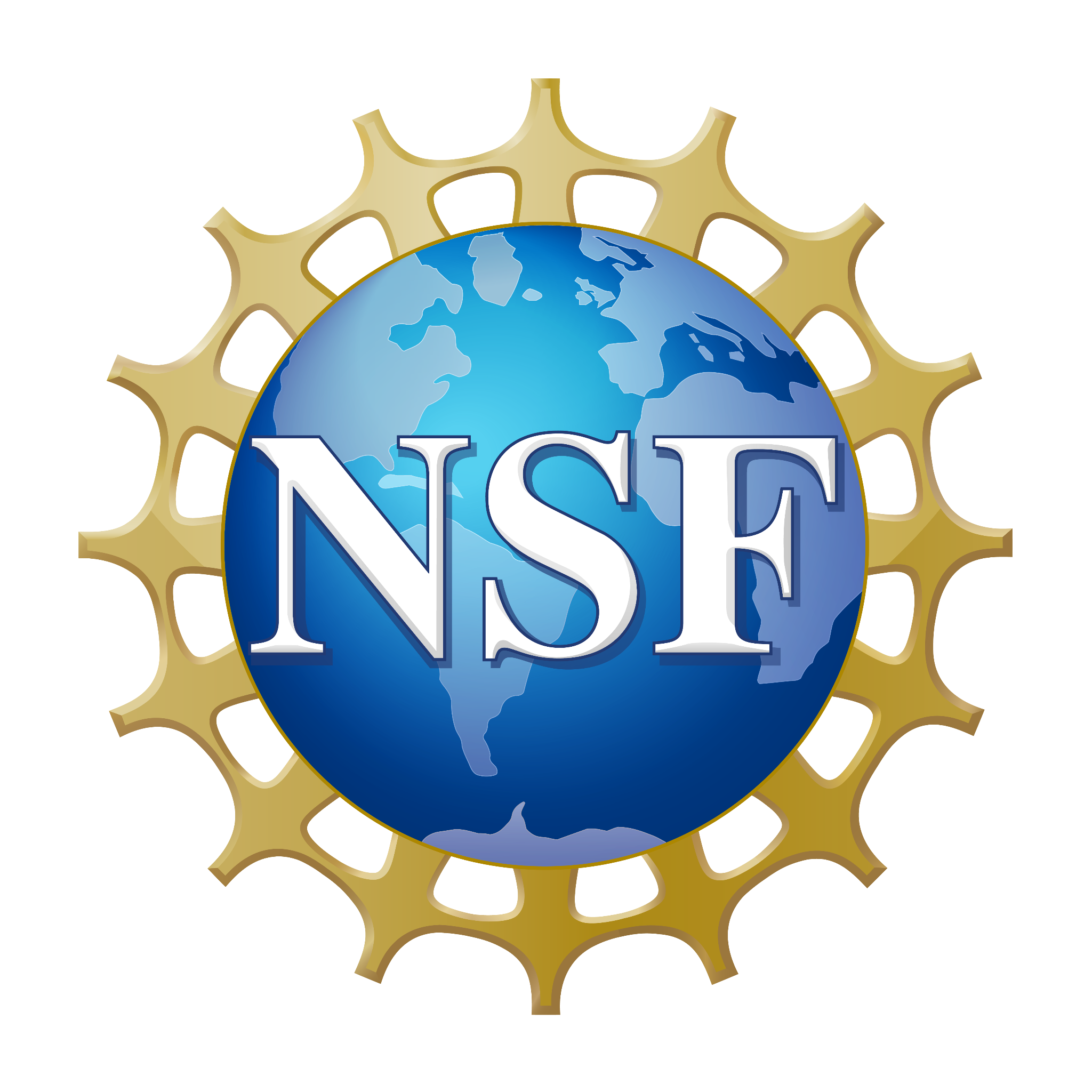
SOTERIA
Public Safety Systems (PSS) deal with victims, first responders, and emergency control centers (ECCs) that coordinate the rescue missions during and aftermath of a disaster. Currently, there is limited understanding of how humans make decisions to utilize personal and shared resources in the wake of disasters; moreover, the existing models are mostly qualitative. Limited information availability in disaster scenarios and resource uncertainty in PSSs pose two major challenges: (1) how to achieve the victims? satisfaction accounting for their risk-aware (autonomous) decision-making characteristics about dynamic resource orchestration? and (2) how to design a resilient disaster response system incentivizing the victims participation in crowdsourcing? The innovative SOTERIA project addresses these challenges by proposing a novel behavioral decision-making model that captures humans decision-making characteristics under risk, stemming from uncertain availability of resources. It introduces a new field in game theory, called Satisfaction Games that aims to satisfy the victims? minimum service requirements rather than maximizing their overall satisfaction, addressing the resource management problems in PSSs. A novel bio-inspired Disaster Response Network (DRN) is also proposed that mimics the inherent robustness of biological networks of living organisms, to support the victims? participation in reliable crowdsourcing, while the truthfulness and quality of the collected information are evaluated based on the newly invented Bayesian Prospect Theory. The proposed methods and the system will be evaluated using real-world field data.
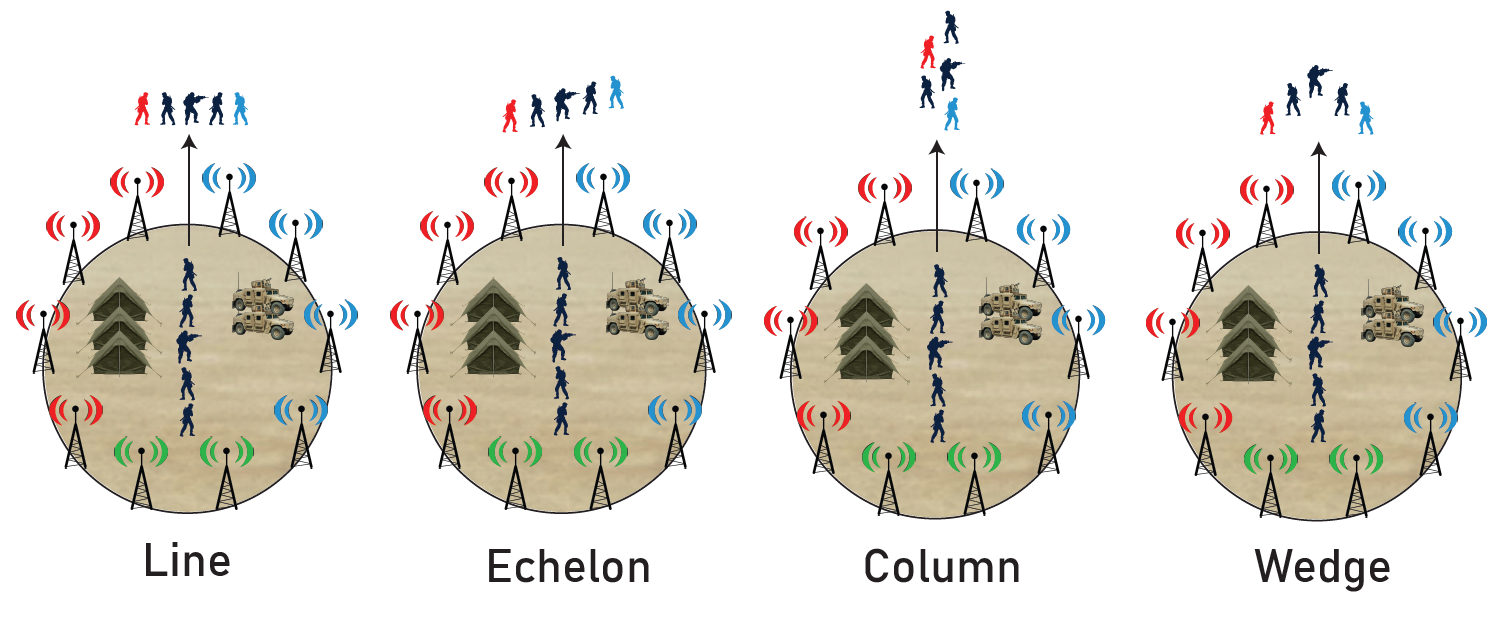
The SOTERIA project will create new distributed control, optimization, and scalable resource management techniques in PSSs. The novelty lies in the integrated approach to efficiently managing resources considering human behavior and Tragedy of the Commons phenomena about shared resources, thus enhancing the victims satisfaction instead of utility maximization. To deal with incomplete information about resource availability, the proposed reinforcement learning techniques will enhance the victims decision-making capability in real time. Research outcomes of this project have tremendous potential for supporting ECC activities and saving peoples lives and infrastructures during and after disasters, by designing robust situation-aware disaster response networks and advancing state of the art research in Prospect Theory, Tragedy of the Commons, and Satisfaction Games. The project will train undergraduate and graduate students and the research findings will be disseminated via a project website and high-quality publications.

GMI: Assessment and Coordination of EVSE Cybersecurity Standards
In coordination with the Biden Administration’s National Standards Strategy for Critical and Emerging Technology, PROTON Lab works to implement and harmonize cybersecurity requirements and testing for the Electric Vehicle Supply Equipment (EVSE) ecosystem. This project works with the National Electric Vehicle Infrastructure program, DOE/DOT Joint Office, and states to introduce new cybersecurity requirements related to Electric Vehicle (EV) chargers. The end products of this effort will be a standardized set of testing requirements for EVSE equipment and an “Energy Star” EVSE Cybersecurity Certification Program. An approach of voluntary certification is likely the best path forward in the US. With listed products, consumers can dictate the desired cybersecurity level based on personal preference, or procurement language can be set by the organization or regulator for a given threshold. This project will create the infrastructure and demonstrate the certification of three EVSE products to a tiered certification program.
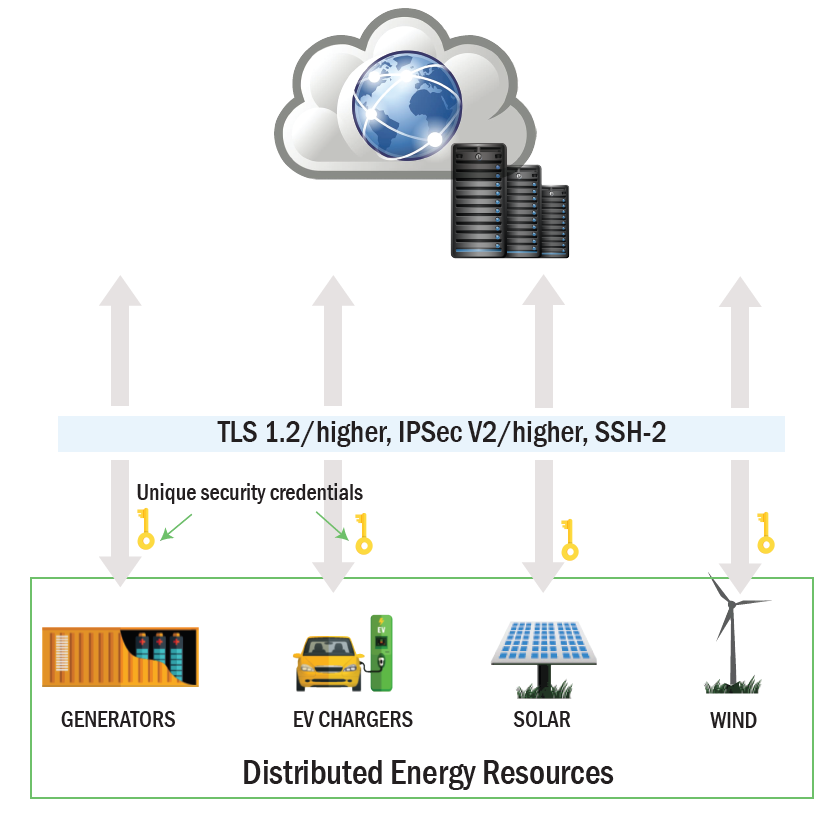

Goaltender: Cloud-Based Defense and Response Tools for the DER Ecosystem
Numerous Distributed Energy Resource (DER) and Electric Vehicle Supply Equipment (EVSE) systems rely on persistent cloud connections for essential functions such as firmware updates, remote maintenance, operational control, and telemetry retrieval. These cloud-based frameworks often feature Application Programming Interfaces (APIs) or communication interfaces that enable utilities to interact with DER systems using standardized protocols like IEEE 2030.5, DNP3 SA, OCPP/OCPI, OPC UA, or OpenADR. While communication links are typically encrypted, this encryption remains intact until the data reaches backend systems at third-party providers or utility operators. Without mechanisms like deep packet inspection or robust firewall protections at these endpoints, malicious payloads could infiltrate encrypted transmissions from compromised devices, remaining undetected until processed at the vendor or utility level. This vulnerability poses significant risks to cloud infrastructures and on-premises utility systems.
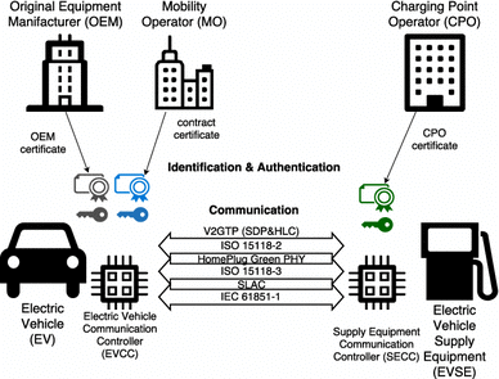
The project aims to establish a comprehensive framework for DER vendors, aggregators, operators, and utilities to implement robust, multi-layered security measures for Distributed Energy Resource Management Systems (DERMS). It will incorporate Next-Generation Firewalls (NGFWs) alongside Security Orchestration, Automation, and Response (SOAR) solutions to enhance system defenses. By project completion, commercial NGFW solutions, such as those provided by Palo Alto Networks, are expected to be accessible via platforms like the AWS Marketplace. Open-source SOAR playbooks will be developed to ensure broad usability across various SOAR platforms, including Palo Alto Networks Cortex XSOAR. Demonstrations by industry leaders such as SCE, PPL, DERSec, and ChargePoint will showcase the efficacy of these solutions, encouraging adoption across the DER ecosystem. Insights and outcomes will be disseminated through the DER Cybersecurity Workgroup, industry publications, and academic research, promoting widespread implementation of the proposed security enhancements.

Secure Network Economics supporting the Central Bank Digital Currency
Autonomous trust mechanisms enable Internet of Things (IoT) devices to function cooperatively in a wide range of ecosystems, from vehicle to vehicle communications to mesh sensor networks. A common property desired in such networks is a mechanism to construct a secure, authenticated channel between any two participating nodes to share sensitive information, nominally a challenging proposition for a large, heterogenous network where node participation is constantly in flux. This project explores a contract-theoretic framework that exploits the principles of network economics to crowd-source trust between two arbitrary nodes based on the efforts of their neighbours. Each node in the network possesses a trust score, which is updated based on useful effort contributed to the authentication step. The scheme functions autonomously on locally adjacent nodes and is proven to converge onto an optimal solution based on available nodes and their trust scores. Core building blocks include the use of Stochastic Learning Automata to select the participating nodes based on network and social metrics, and formulation of a Bayesian trust belief distribution from the past behaviour of the selected nodes. An effort-reward model incentivizes selected nodes to accurately report their trust scores and contribute their effort to the authentication process.
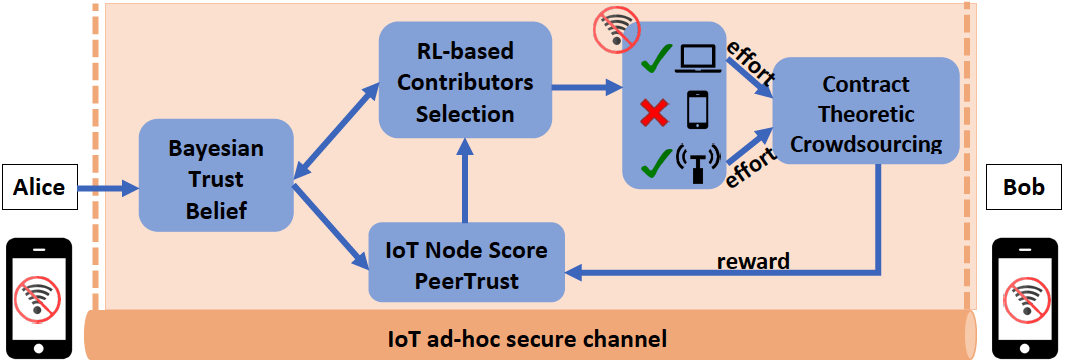

RESCUE
Natural and man-made disasters pose a serious threat to individuals, assets, and society. As such, public safety organizations and first responders are increasingly reliant on Information Communication Technology (ICT) to perform their duties. Disaster management requires a set of capabilities, which includes resource management, access to relevant data and information, and robust and resilient communications. In support of these needs, the RESCUE project will design a three dimensional (3D) networks architecture that exploits the advances in the field of next generation wireless networks to provide a prototype solution such that an integrated communications system for disaster relief operations is realized. Additionally, an innovative massive multiple access mechanism and a dynamic spectrum sharing model will be introduced to increase the public safety system?s capacity and improve the spectrum utilization, respectively, during the relief operations. A new Positioning, Navigation, and Timing (PNT) solution will be proposed to support scenarios of Global Positioning System (GPS) denial by utilizing the next generation networks technology of Reconfigurable Intelligent Surfaces (RIS). The outcomes will have long-lasting benefits for the communications, and in turn the well-being, of the victims and first responders during disaster relief operations. Furthermore, the project will provide unique training for graduate and undergraduate students at the crossroads of reinforcement learning and next generation networking technologies.
The RESCUE project will introduce a novel 3D networks architecture that exploits terrestrial and aerial base stations to provide the necessary redundancy of communications during disaster relief operations. A novel massive multiple access mechanism will support the victims and first responders? connectivity, and a robust dynamic spectrum sharing model will improve the spectrum utilization during disaster scenarios characterized by increased traffic demand. Innovative mechanisms to support the extended communications coverage, the mobility management, and the efficient resource management of the limited communications resources will be designed via utilization of the next generation wireless networks? technologies of Reconfigurable Intelligent Surfaces, Intelligent Omni-Surfaces, and the Integrated Access and Backhaul. A new positioning, navigation, and timing solution will support the disaster relief operations in cases of GPS-denial scenarios or indoor environments by exploiting the next generation wireless networks? technologies. A thorough testing and evaluation of the proposed 3D networks architecture and the supporting modules will be performed by following a simulation, emulation, and in-field iterative testing approach. The novelty of the RESCUE project lies in the synergistic, integrated, and pragmatic approach to efficiently utilize the next generation wireless networks? technologies to design an operational prototype that will support the connectivity of victims and first responders in public safety scenarios. The research outcomes of this project have the potential to support activities of Emergency Control Centers, such as in the City of Albuquerque.
